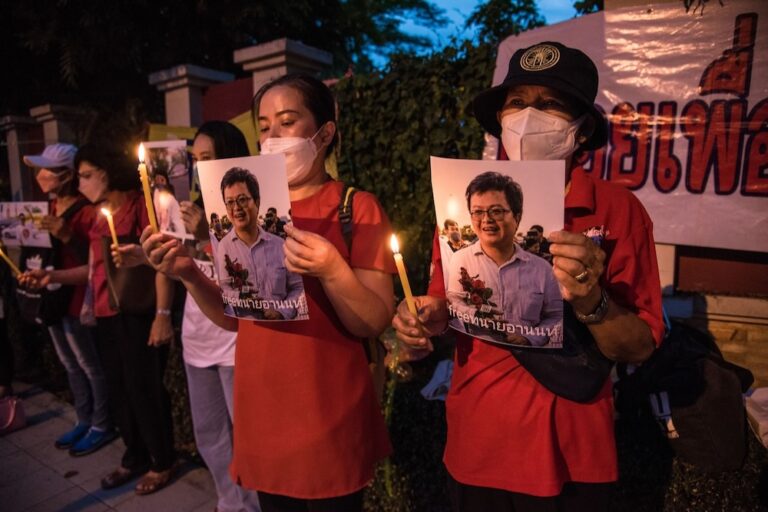Thailand may have nominally ended martial law on 1 April but the new powers are just as sweeping and intimidating.
This statement was originally published on seapa.org on 3 April 2015.
It is a rare occasion when the lifting of martial law is met with unprecedented alarm and condemnation. Yet, this is exactly what happened when the National Council for Peace and Order (NCPO) lifted Martial Law on 1 April 2015, after being in place for more than 10 months in Thailand.
Normally, such lifting signals a return to normalcy, specifically the return to full civilian rule from the exception of military power needed to address situations that imperil the state. However, Martial Law in Thailand was replaced with NCPO Order 3/2558 that gave unprecedented powers to the head of the military junta.
The move was intended to remove Thailand’s international stigma from being under military rule since 20 May, which sought to end months of unrest but has since dampened investor confidence and the flow of tourism into the country. Thailand may have nominally ended martial law but the new powers under the new Order are just as sweeping and intimidating.
Order 3/2558 outlines the implementation of Section 44 of the 2014 Interim Constitution that gave full powers to the head of the NCPO to respond to any act which undermines public peace and order or national security, the Monarchy, national economics or administration of State affairs – whether internal or external, or regardless of executive, legislative or judicial basis.
The order retains most of the military powers under martial law, including access, search, freezing, and/or seizure of property; as well as summons, detention, arrest, and ‘support’ of persons related to the enforcement. The order retains the power to prohibit political gatherings of more than five persons, and of publication or material likely to cause public alarm or containing false information.
[Note: SEAPA supports and endorses the joint statement of its member the Thai Journalists Association with three other professional media groups. Original Thai version is here.]
These powers are to be directed against specific crimes under the Penal Code (Articles 107-118), the regulation of weapons, and violations of NCPO announcements and orders.
The most glaring difference between Order 3/2558 and Martial Law is that the former normalises exceptional restrictions necessary during the imposition of the latter. Gone is the necessity for justification of extraordinary powers for the military and suspension of civilian rule because of imminent danger to the state due to the threat of war or insurrection. Similarly, the Order makes no mention of the implicit time limitation as in martial law, which requires governments to periodically justify to the international community why the emergency response should be maintained.
Before Order 3/2558, the implementation of martial law had already been problematic, including issues raised about widespread mandatory summons, the mandate of military courts, secret detentions, alleged torture, and broad restrictions on the media and free speech.
With the new Order, absolute power of the military establishment (during martial law) now resides in one person – the head of the NCPO. The junta chief can appoint any military officer to act on his behalf to enforce his power. Only he or his authorised representative has the sole discretion to grant exceptions to the prohibitions and penalties under the Order.
On closer reading of Order 3/2558, other questions also need further clarification.
- On Article 2 about the appointment of “Peacekeeping Officers”: How can citizens verify who among military officers are appointed as such? What are the mechanisms to guard against any abuse of power?
- On Article 3, defining the scope of offences under the provision: What is the role of the police (Also Article 8), which are the proper authorities responsible for investigating and processing such offences?
- On Article 4, defining the powers of the Peacekeeping Officers: What is the role of the courts in the procedure granting such powers and what is the accountability mechanism for officers against abuse of such powers?
- On Article 5 about prohibition of certain media: What is the criteria for determining if the content in question ’causes alarm’ or is ‘false information likely to cause public misunderstanding’? If the content in question is true and factual, can truth be a defense against such prohibition?
- On Article 6, on summons and detention of suspects: Why must such detentions be “carried out on premises other than police stations, detention facilities, or prisons”, as in normal procedure?
- On Articles 9 and 10, stipulating penalties for violations of the order: Which legal forum is responsible for determining liability and penalty for such violations?
- On Article 12, prohibiting political gatherings: If the aim of the Order to to lift martial law, why are such activities still banned and what are the criteria for giving permissions to such gatherings?
- Article 13 and 14, on laws governing peacekeeping officers: What is the accountability mechanism in case of abuse by these officers?
The most important question that the military regime must answer is why such sweeping powers are necessary at this point, whether these are proportional responses to existing threats to public order, and why these are vested in one person.



